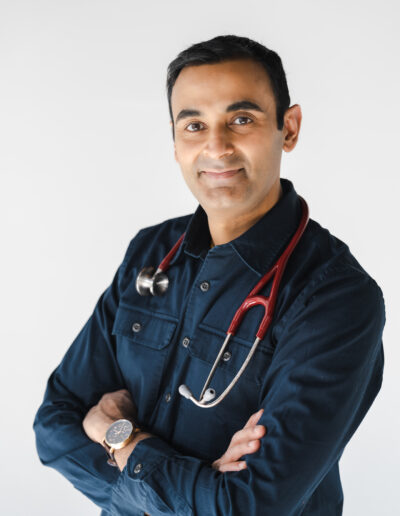
Practicing medicine is a busy, busy business. Physicians (and nurses) see patients in increasingly squeezed time slots, always in the catch 22 situation of dealing with older and more complex patients who actually require more, not less, time.
If you ask most of the general population who have had healthcare interactions, one of the main feedback points they will give, is that all their doctors seem very “rushed” and “in a hurry”. That’s because we are! But is there a way of being in a rush and still maintaining great empathetic communication skills? I believe there’s absolutely a way to do this, and it’s an important skill to master. “The art of making 5 minutes seem like 20 minutes” is the subject of a few slides on a presentation I have—and because lots of people have asked me questions and requested tips, I’d like to share a brief overview of some. Hopefully, any doctor will have more than 5 minutes anyway, because that really isn’t enough time! But let’s take this number as an example. Here are 3 things to be sure to do:
1.Uninterrupted patient talk time
Okay, you have 5 minutes, you’ve got to be focused. The average physician interrupts their patients under 20 seconds into them speaking! Do not underestimate how much even dedicating one whole minute to being an active listener can achieve and be received by the person you are talking to. During this sacred and uninterrupted time, use eye contact and facial expressions to show how engaged you are, and make the patient the center of your world. Then, when the physical exam portion comes around, you can continue to get parts of the history—and even try to get 1 or 2 personable pearls in, like asking them how long they’ve lived in the area or what their weekend plans are.
2.Body language
Human beings are very perceptive animals. This is independent of IQ, gender, race or social class. It’s something innate in all of us. We pick up in a second if the person in front of us is looking hurried or flustered. Especially as a physician, we want to be the model of calmness and authority (authority in a good sense) when we are with a patient. To summarize just a few of the body language cues that tell the other person you are in a hurry, these include talking in a rushed voice, standing up (try to sit down, even for 2 minutes!), looking fidgety, or making rapid hand gestures.
3.Question time
It’s wise to have a strategy in place before you even enter the room. In so many ways, it’s like a professional role play, centered around the unique needs of your patient. However, never leave an encounter without specifically asking an open-ended question about whether the patient has any additional questions or concerns. Even if you are going to deal with these at a later time, it’s our duty as a doctor to make sure that any patient is not left more confused about what’s going on, than when we first walked in! Leaving the encounter on a jovial and positive note, after formulating a solid plan and answering questions, can leave a great impression.
Of course, communication comes so much more naturally to some than others, and you have probably already met and worked with some physicians and other healthcare professionals who are very good at this. It’s worth watching them and their interpersonal skills in action. But everyone (in any field) can always take their skills up several notches if they want to. The life of a doctor at the moment, means that mastering the art of communicating with ease and grace in high-energy, brief interactions—is paramount. As is the delicate skill of maintaining compassion and empathy during these encounters. Most physicians I’ve worked with love receiving feedback on how they’re doing, as without this, there’s no way we can improve. I remember when I was in medical school, we would simulate patient interactions and then receive video feedback. During one such encounter, I recall being quite surprised by how visibly hurried I came across when I saw myself! That was amazing for my own development, because it helped me to hone in on what I needed to improve to be a better physician, and I had some great teachers who guided me.
All doctors can learn and benefit from learning skills such as these, as we strive to give our patients a better experience and maintain relationships within the confines of our current system. As well as being good for our patients, it’s also great for our own job satisfaction too.

Suneel Dhand is a physician, author and speaker. He is Co-Founder at DocsDox and Founder at DocSpeak. His latest keynote presentation is: “Using amazing everyday communication techniques to improve patient experience and healthcare outcomes”. Learn more about him here.
Follow Suneel on Facebook: www.facebook.com/DrSuneelDhand
Twitter: @SuneelDhand
Instagram: suneeldhand

